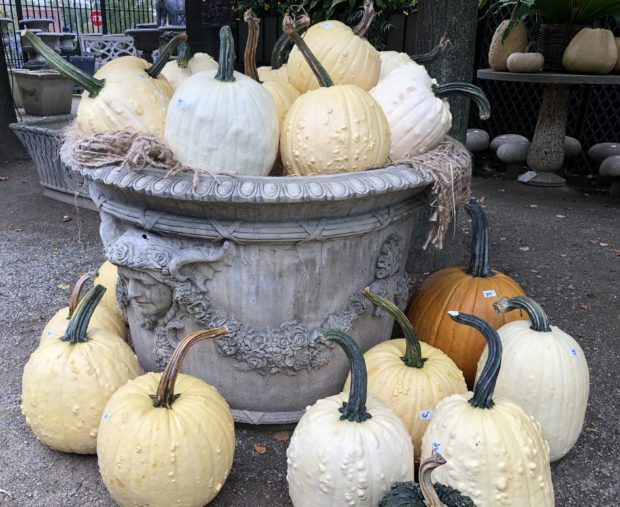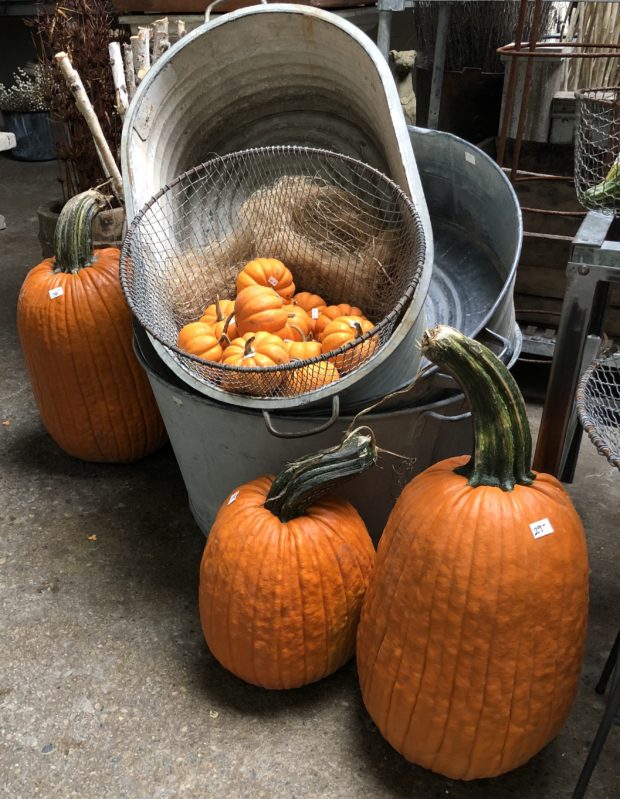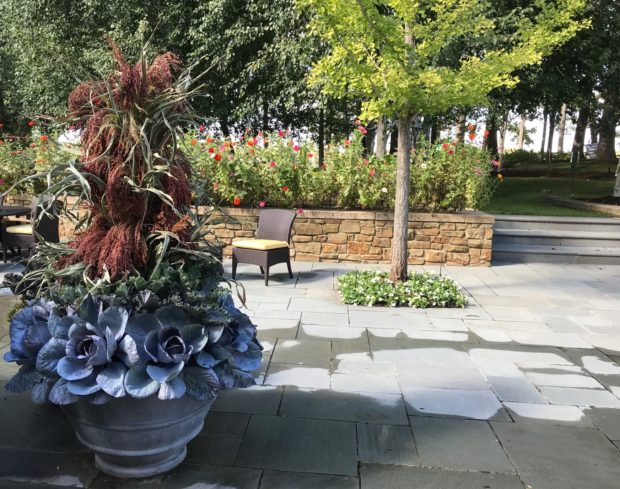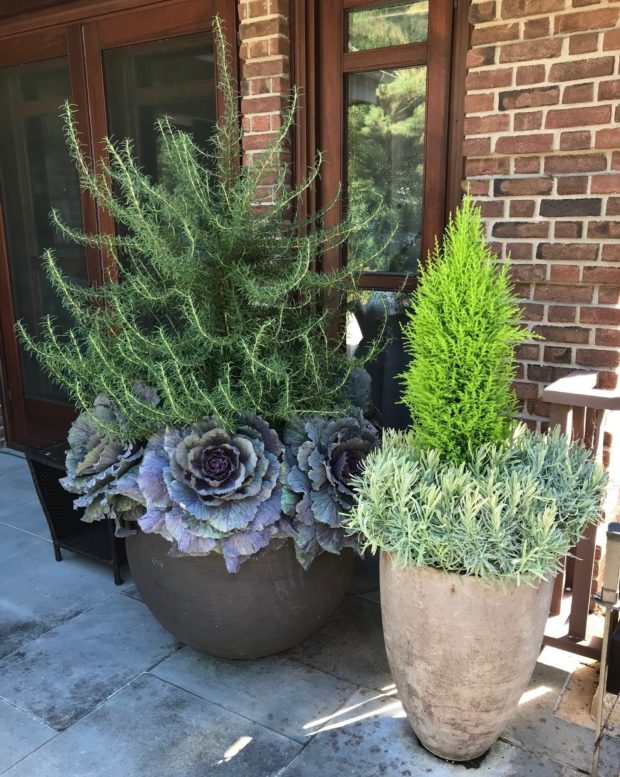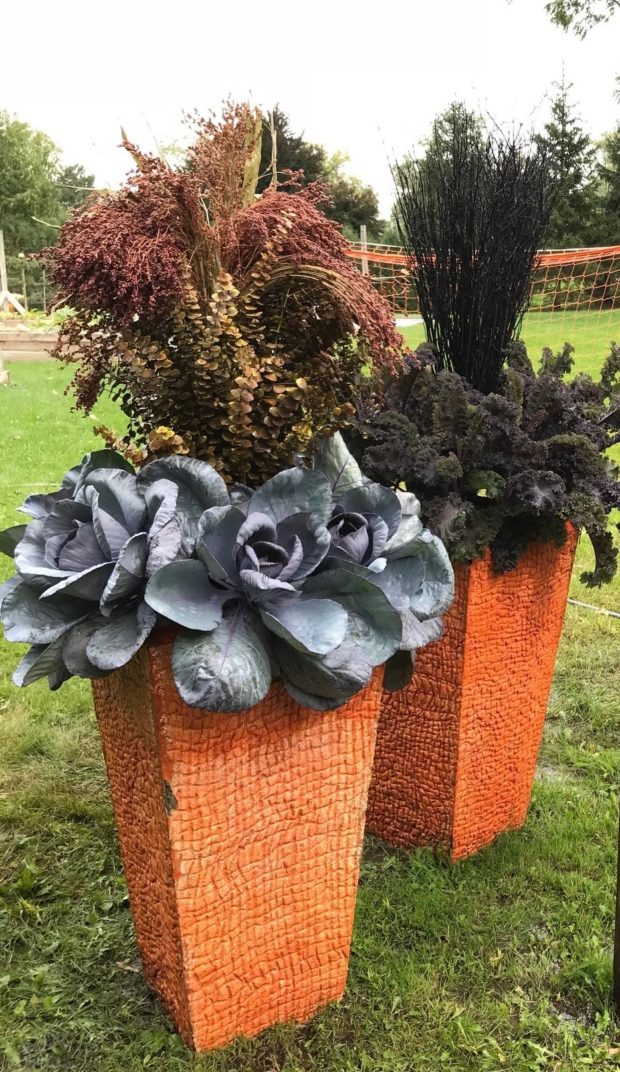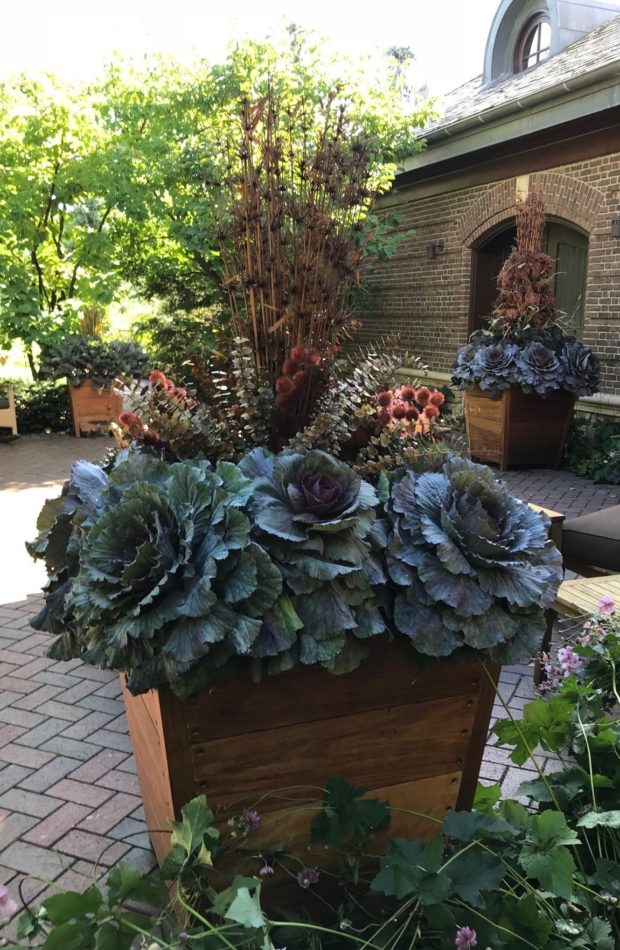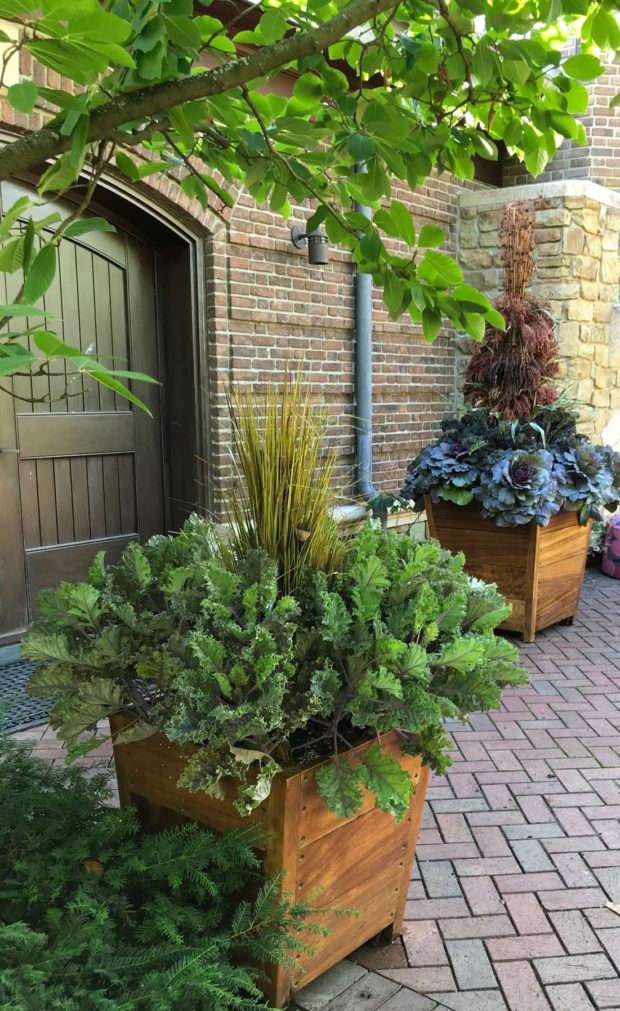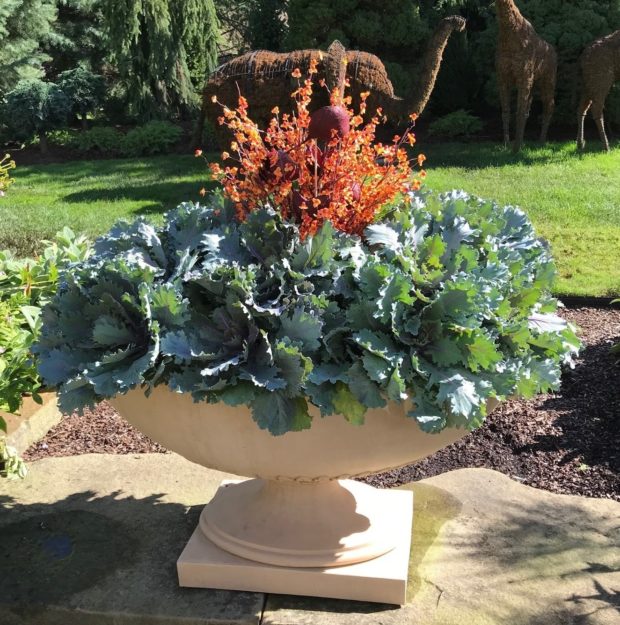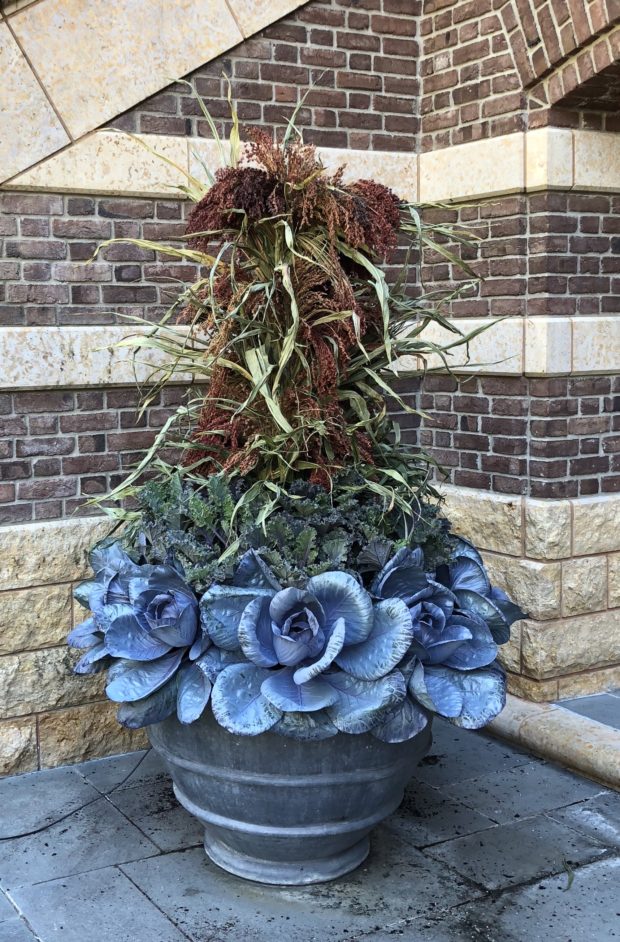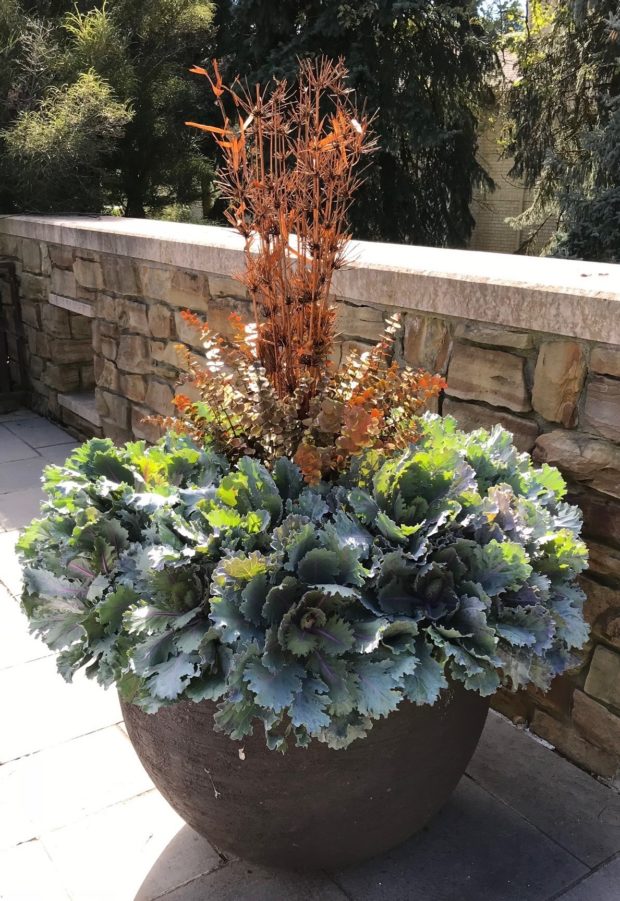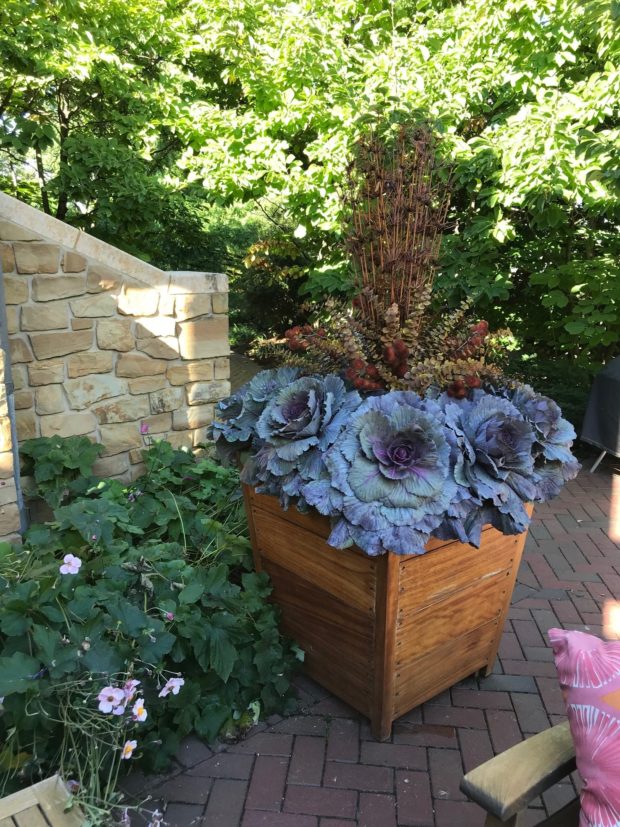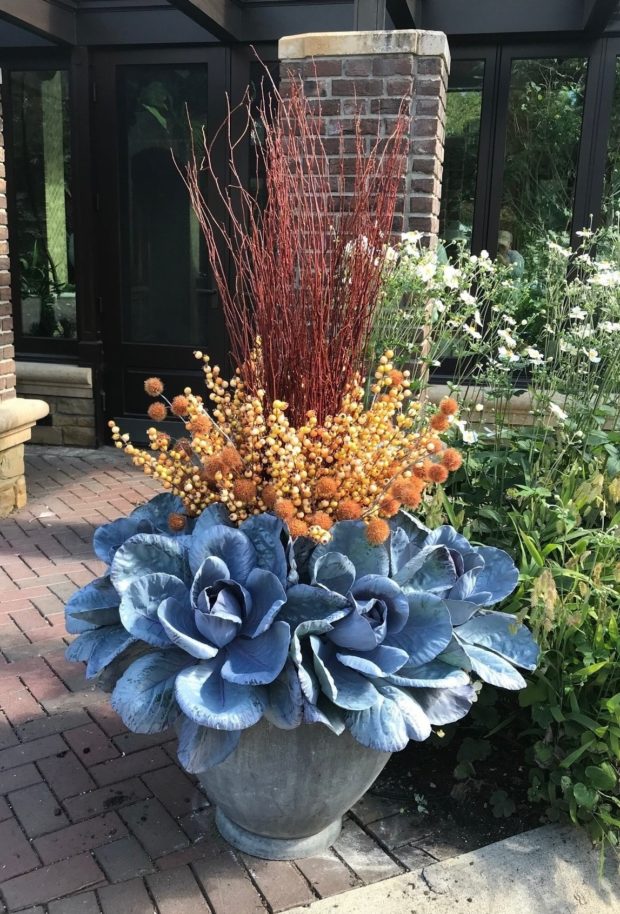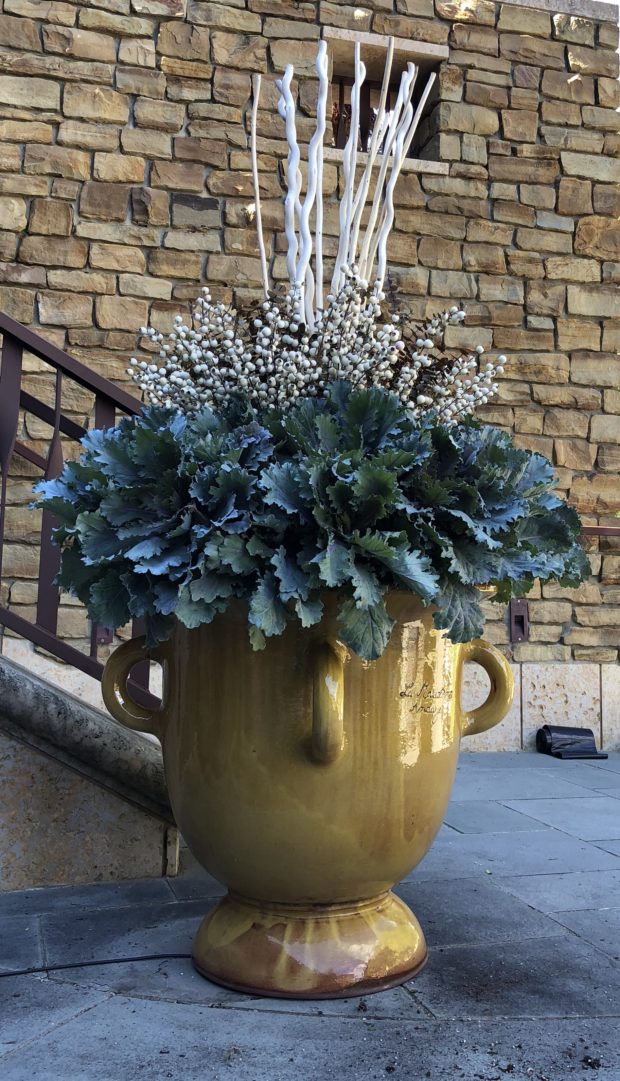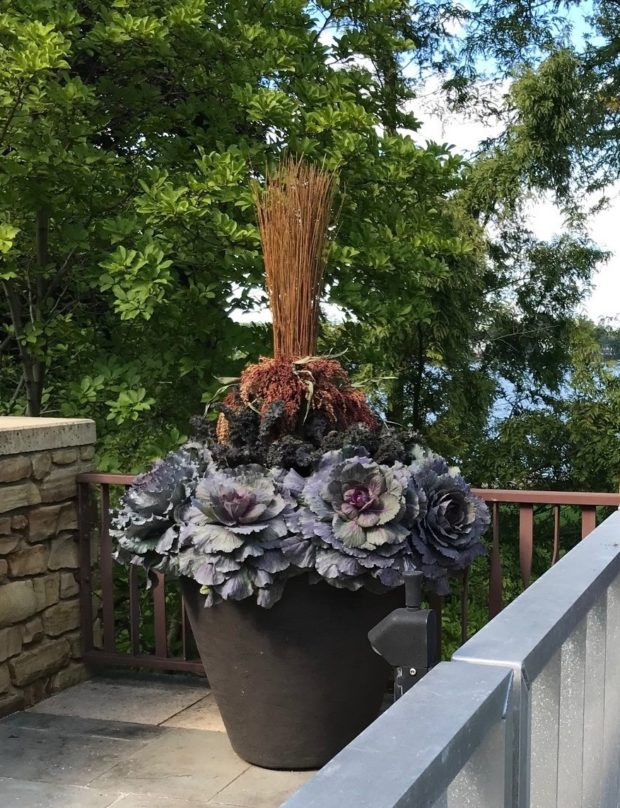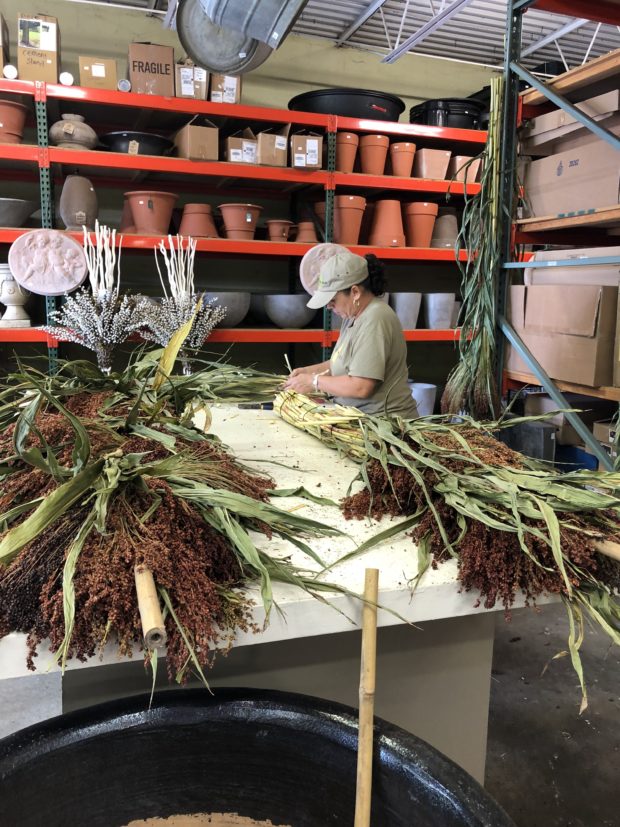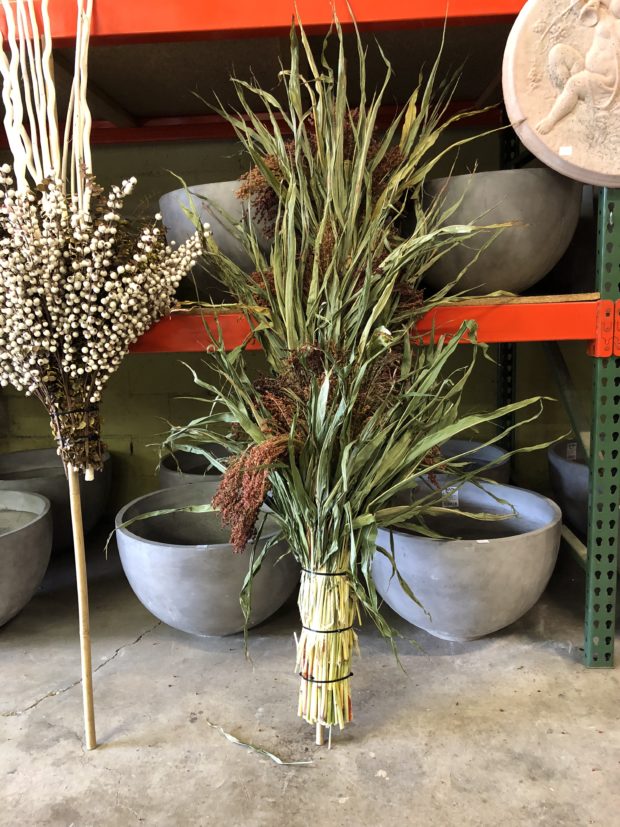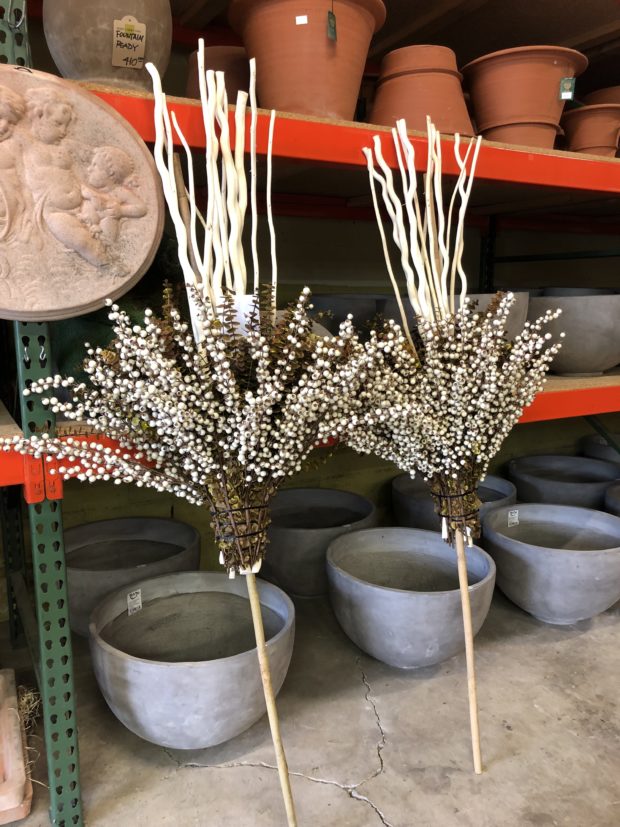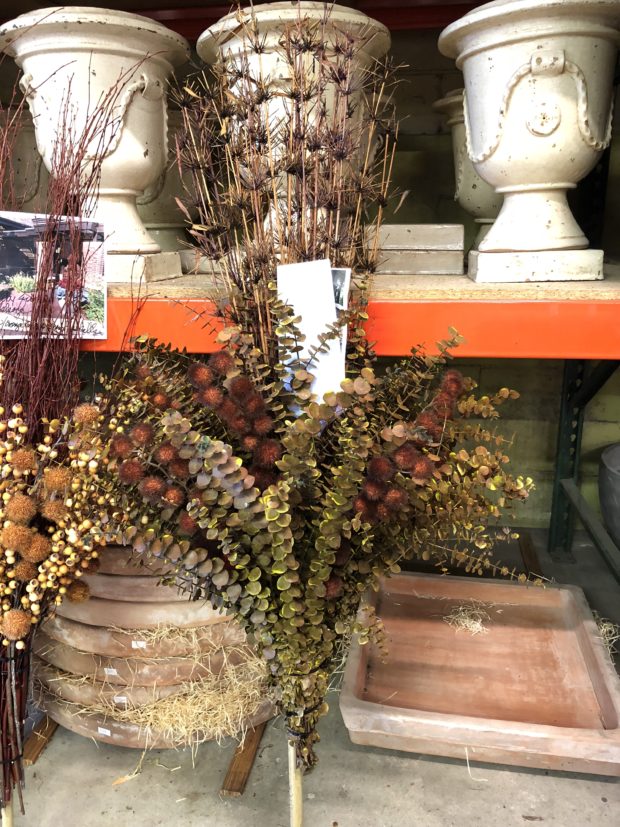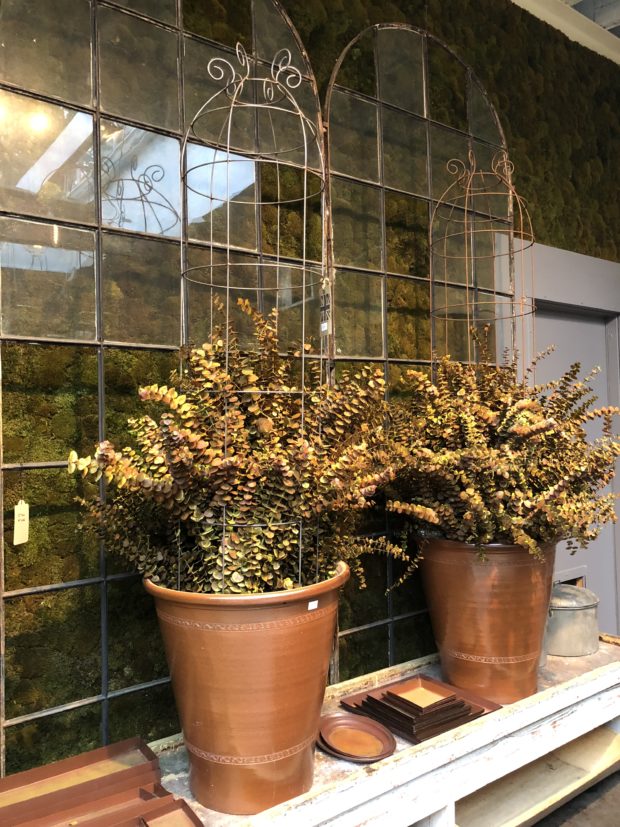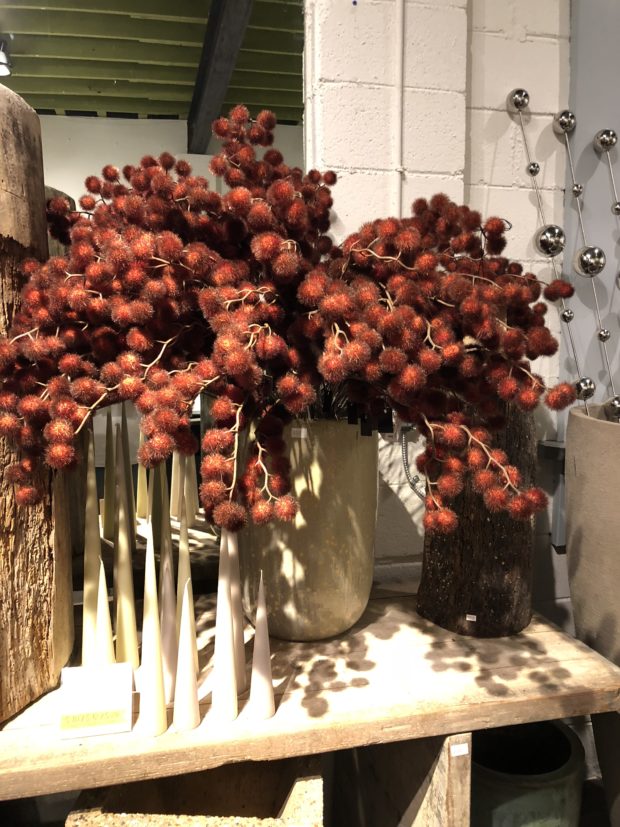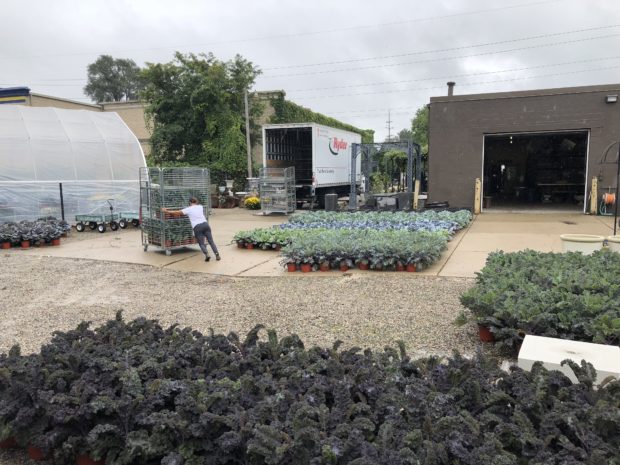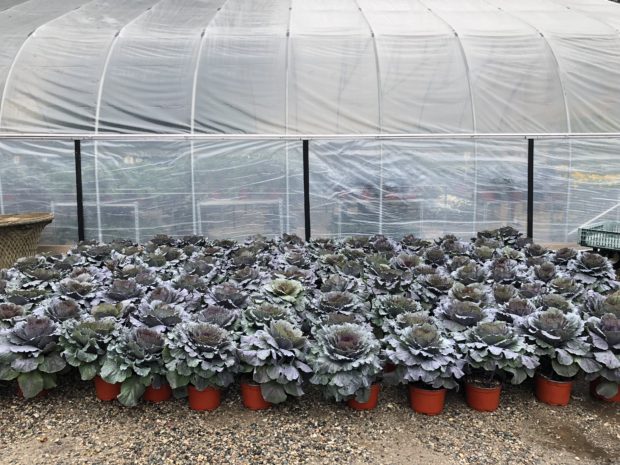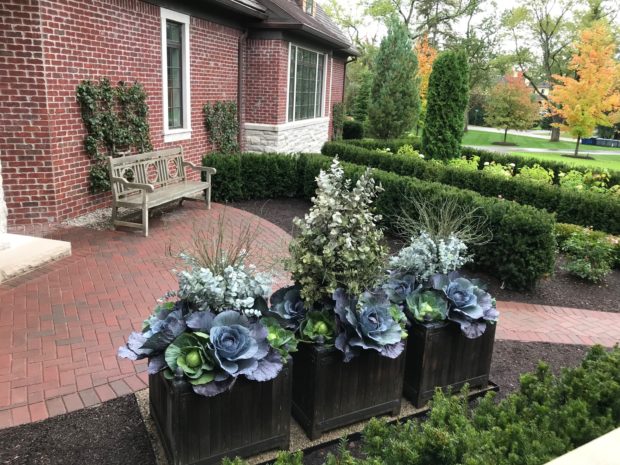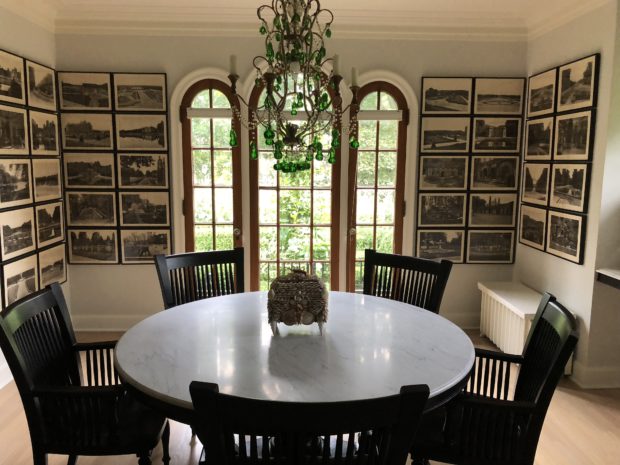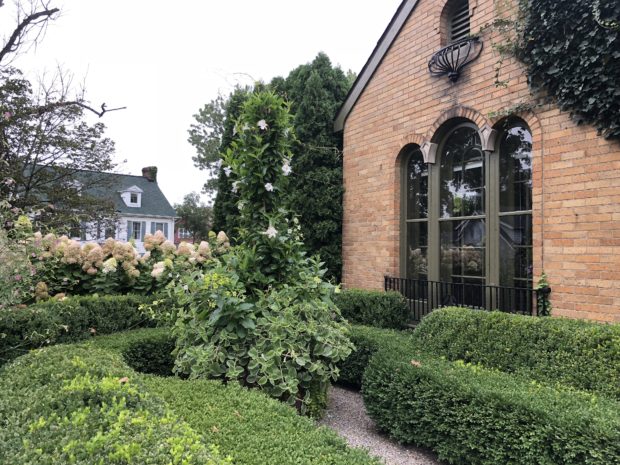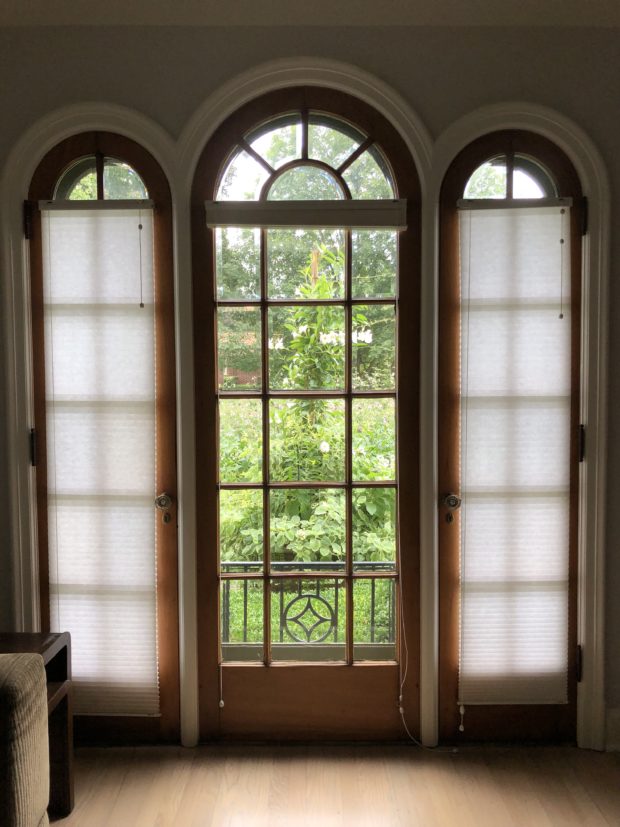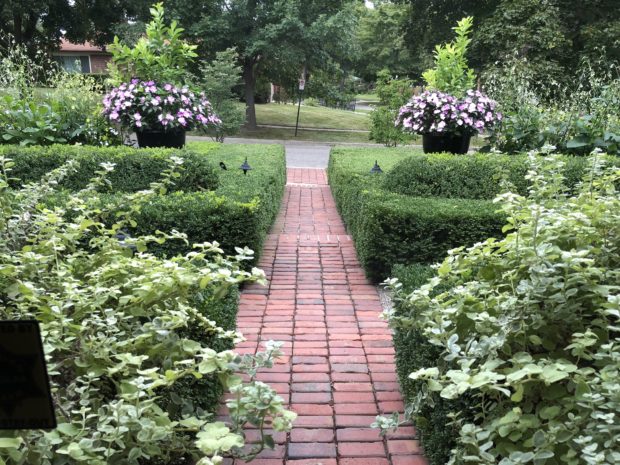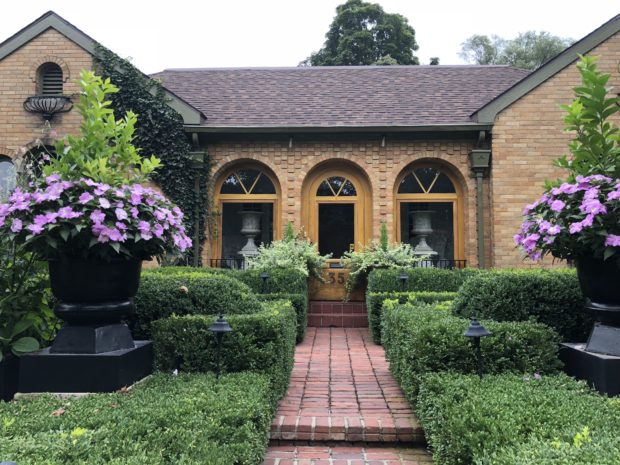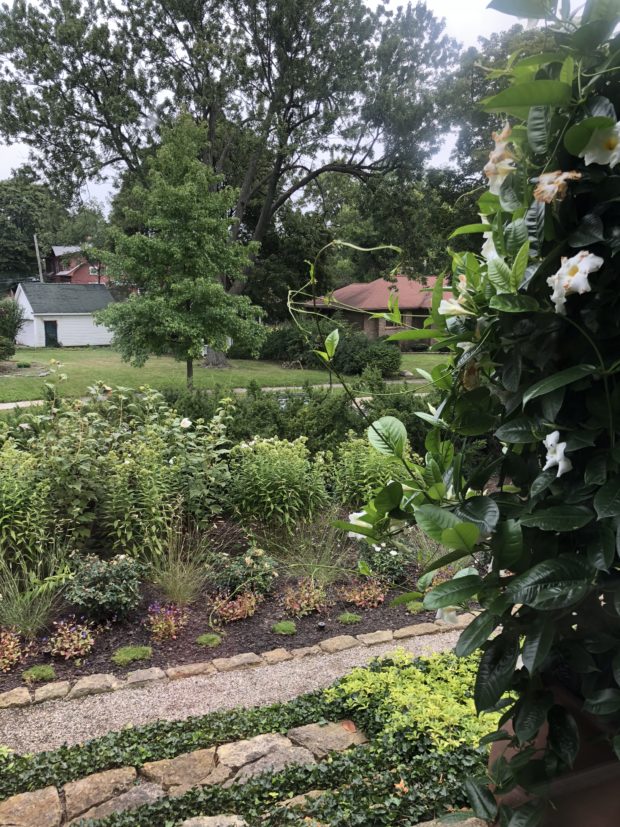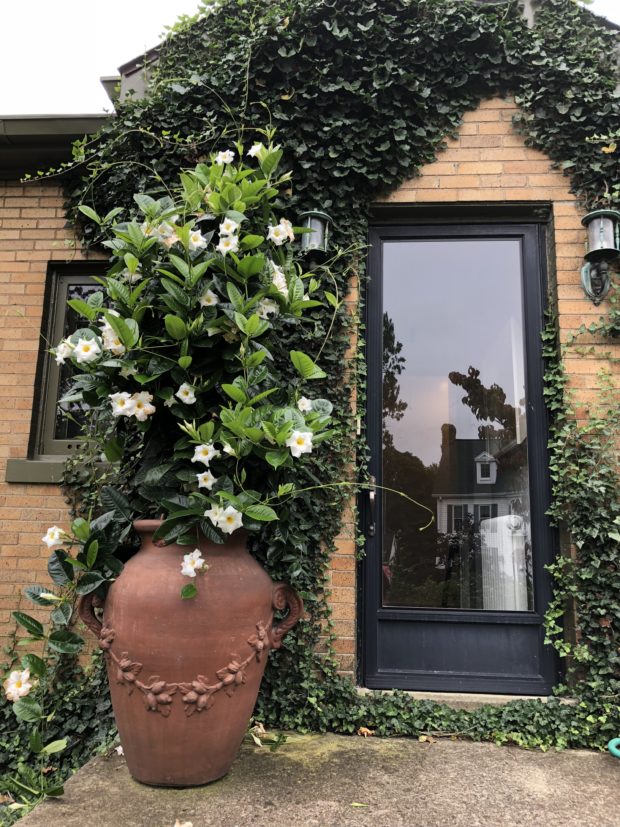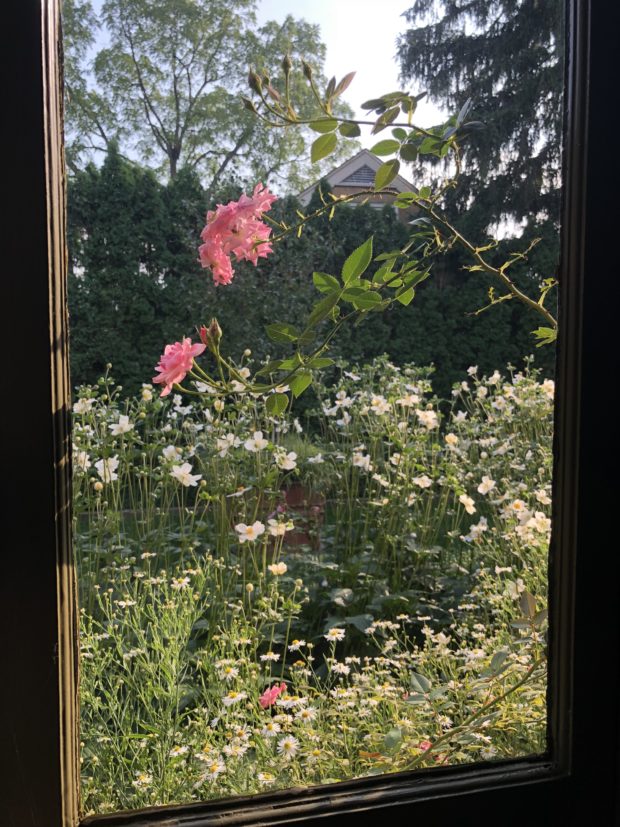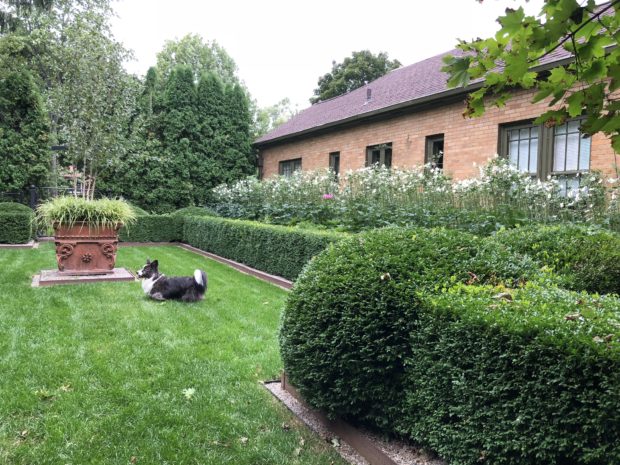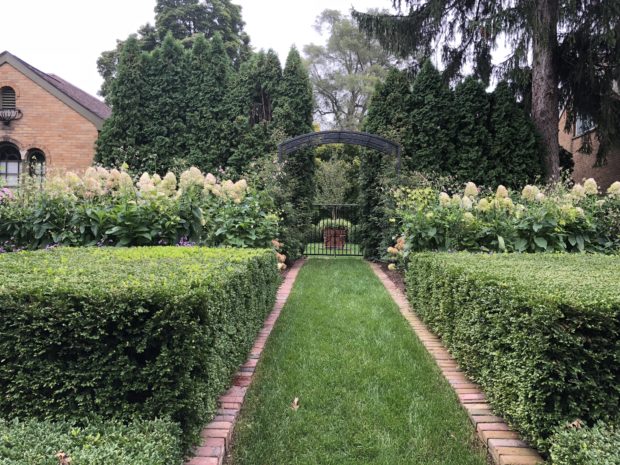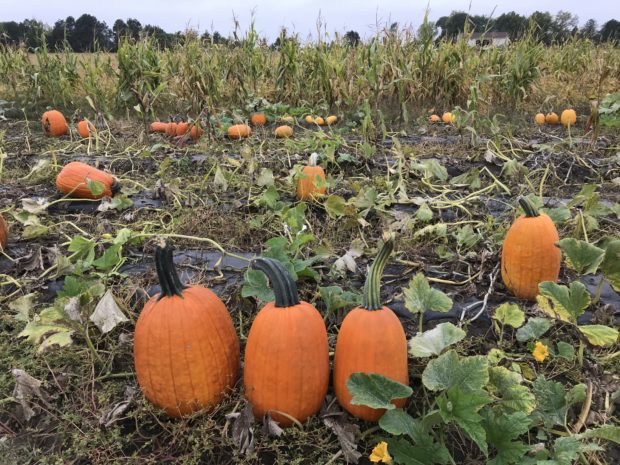 No fall garden journal of mine would be complete without a discussion of the pumpkins. Not just any pumpkins, but those especially beautiful and select fall fruits that Rob cuts and brings to the shop for sale in October. He is most assuredly an aficionado of this iconic sculpture of the fall season. Were you to engage him on the topic, you might be witness to a passionate discussion of shape, color, stem size and surface. And standability. He favors pumpkins that stand on their own, over the leaners. But for those pumpkin fans that admire a pumpkin on its side, he will have those too. He can converse at length on the history and characteristics of varieties generally available in our area. And their variants. You will run out of patience for the pumpkin discussion long before he runs out of things to say. Normally he is quite taciturn, but he is an unabashed fan of pumpkins. Just ask him.
No fall garden journal of mine would be complete without a discussion of the pumpkins. Not just any pumpkins, but those especially beautiful and select fall fruits that Rob cuts and brings to the shop for sale in October. He is most assuredly an aficionado of this iconic sculpture of the fall season. Were you to engage him on the topic, you might be witness to a passionate discussion of shape, color, stem size and surface. And standability. He favors pumpkins that stand on their own, over the leaners. But for those pumpkin fans that admire a pumpkin on its side, he will have those too. He can converse at length on the history and characteristics of varieties generally available in our area. And their variants. You will run out of patience for the pumpkin discussion long before he runs out of things to say. Normally he is quite taciturn, but he is an unabashed fan of pumpkins. Just ask him.
 One year his yearly buying trip to Europe ran long. He came home at the end of September to find not a single pumpkin at the shop. Driving for hours to the grower and field of his choice, cutting the fruits free from the vines, and carrying them to the edge of the field so they can be loaded on to the grower’s tractor and trailer would not be my choice of a day’s work. I made it clear that if he wanted pumpkins, he would need to be available to make that happen. He now plans his European buying trip so he is home for the pumpkin season. It is a good bit of travel, and a lot of work to put a collection together. This year, he, David and Marzela made the trip in 3 separate trucks to pick pumpkins. The field was muddy, but navigable.
One year his yearly buying trip to Europe ran long. He came home at the end of September to find not a single pumpkin at the shop. Driving for hours to the grower and field of his choice, cutting the fruits free from the vines, and carrying them to the edge of the field so they can be loaded on to the grower’s tractor and trailer would not be my choice of a day’s work. I made it clear that if he wanted pumpkins, he would need to be available to make that happen. He now plans his European buying trip so he is home for the pumpkin season. It is a good bit of travel, and a lot of work to put a collection together. This year, he, David and Marzela made the trip in 3 separate trucks to pick pumpkins. The field was muddy, but navigable.
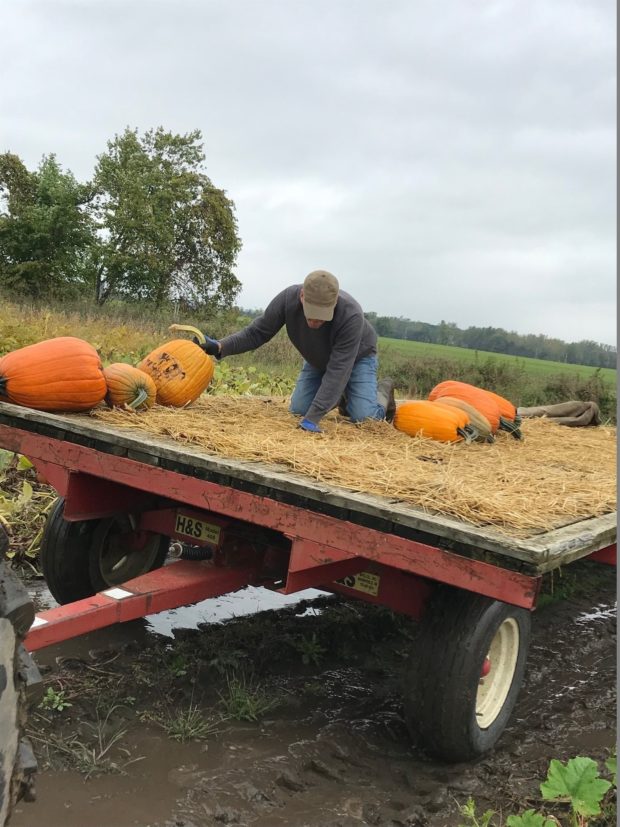 His relationship with the breeder and grower spans a few years now. I suspect they enjoy each other’s company. Once he realized that Rob likes to look at pumpkins as much as he likes to grow them, he spent a lot of time talking to Rob about his breeding program, and his growing protocol. I think Rob has a fairly good understanding of what characteristics are of interest to him. A testament to his breeding skill that spans many decades is the fact that seed companies send representatives every year to look over his crop, and buy seed. They get first pick. But once the round of seed buyers have made their evaluation and purchases, the coast is clear for Rob to shop.
His relationship with the breeder and grower spans a few years now. I suspect they enjoy each other’s company. Once he realized that Rob likes to look at pumpkins as much as he likes to grow them, he spent a lot of time talking to Rob about his breeding program, and his growing protocol. I think Rob has a fairly good understanding of what characteristics are of interest to him. A testament to his breeding skill that spans many decades is the fact that seed companies send representatives every year to look over his crop, and buy seed. They get first pick. But once the round of seed buyers have made their evaluation and purchases, the coast is clear for Rob to shop.
 He did this year’s shopping in two trips. One by himself, to see what was out there. It was a tough year for growing pumpkins. The heat was relentless, and the rain scant. I can understand that if pumpkins start to mature in late summer, they will be ready for market too early. We wait until the beginning of October to buy. Pumpkins that ripen as the temperatures are beginning to moderate will have a better chance of lasting intact a long time. As we rarely have a really hard frost before the end of October, the pumpkin season can be enjoyed a month or better. In a mild fall, I have seen them survive with no soft or rotten spots until after well after Thanksgiving.
He did this year’s shopping in two trips. One by himself, to see what was out there. It was a tough year for growing pumpkins. The heat was relentless, and the rain scant. I can understand that if pumpkins start to mature in late summer, they will be ready for market too early. We wait until the beginning of October to buy. Pumpkins that ripen as the temperatures are beginning to moderate will have a better chance of lasting intact a long time. As we rarely have a really hard frost before the end of October, the pumpkin season can be enjoyed a month or better. In a mild fall, I have seen them survive with no soft or rotten spots until after well after Thanksgiving.
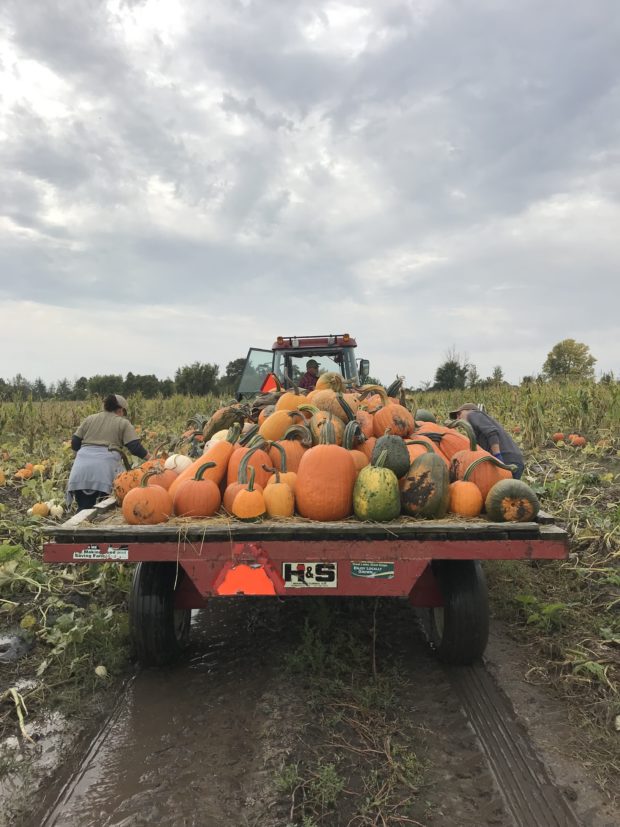 Though the picking is organized, it is still hard work. Rob picks what he wants, and sets them next to the road running through the field. The pumpkins are then loaded on a flat bed pulled by a tractor.
Though the picking is organized, it is still hard work. Rob picks what he wants, and sets them next to the road running through the field. The pumpkins are then loaded on a flat bed pulled by a tractor.
 Two trailer loads amounted to about 500 pumpkins. Give or take, about 10,000 pounds worth of pumpkins. The shapes, colors, sizes, surfaces and density look great to the last. What to do with one of these pumpkins? Set in on your porch, and celebrate the fall.
Two trailer loads amounted to about 500 pumpkins. Give or take, about 10,000 pounds worth of pumpkins. The shapes, colors, sizes, surfaces and density look great to the last. What to do with one of these pumpkins? Set in on your porch, and celebrate the fall.
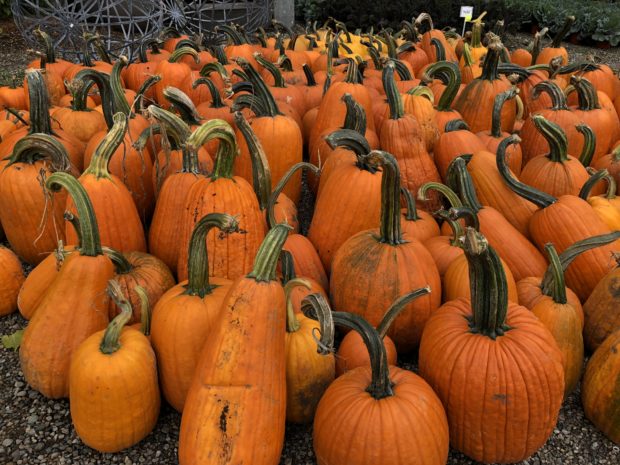 All of these tall oblong and round orange pumpkins with expressive stalks look good to me.
All of these tall oblong and round orange pumpkins with expressive stalks look good to me.
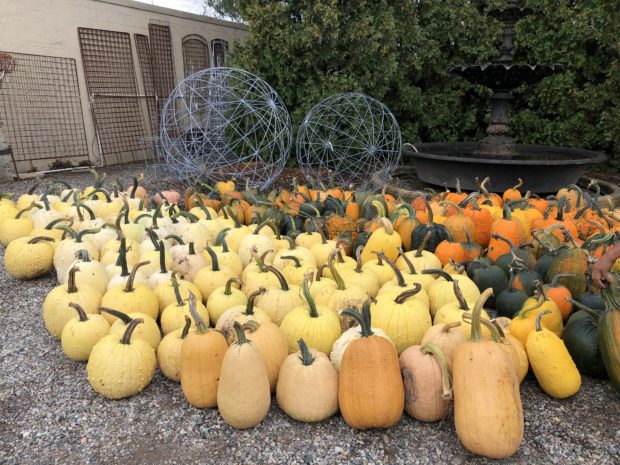 Orange is not the only color sported by pumpkins. Orange, black, bicolor orange and green, cream, white, peach, yellow, caramel colored-take your pick.
Orange is not the only color sported by pumpkins. Orange, black, bicolor orange and green, cream, white, peach, yellow, caramel colored-take your pick.
 The shop is awash in beautiful pumpkins right now; you’ll see.
The shop is awash in beautiful pumpkins right now; you’ll see.
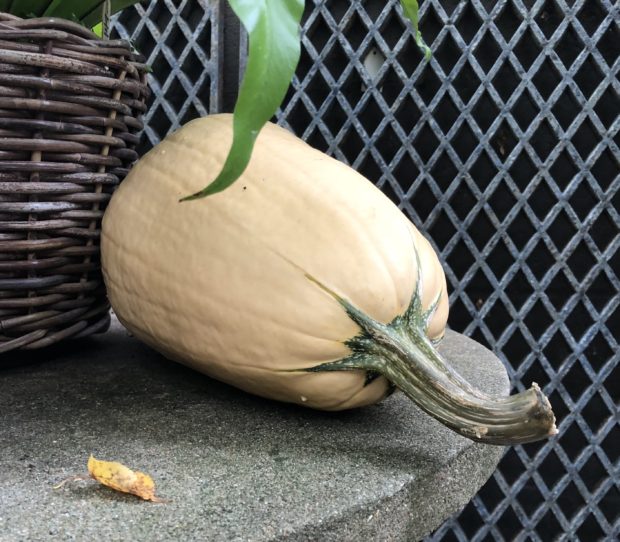 This is my favorite pumpkin of all of Rob’s 500 choices. It is a subtle choice. I love the creamy gold skin. The oblong shape. The thick stem whose thin green anchors grip the top of the fruit. In my opinion, this is a perfect pumpkin. Should you be of a mind to represent the fall with the pumpkin of your choice, we have lot to choose from. As for the idea of dressing a porch or a terrace in Pumpkins – why not? Beautifully grown pumpkins speak loud and clear to that moment gardeners call the fall season. Once October comes, I load up on the pumpkins.
This is my favorite pumpkin of all of Rob’s 500 choices. It is a subtle choice. I love the creamy gold skin. The oblong shape. The thick stem whose thin green anchors grip the top of the fruit. In my opinion, this is a perfect pumpkin. Should you be of a mind to represent the fall with the pumpkin of your choice, we have lot to choose from. As for the idea of dressing a porch or a terrace in Pumpkins – why not? Beautifully grown pumpkins speak loud and clear to that moment gardeners call the fall season. Once October comes, I load up on the pumpkins.

